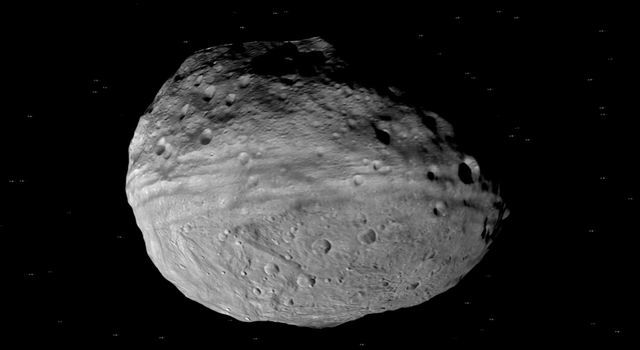News | March 31, 2015
NASA Releases Tool Enabling Citizen Scientists to Examine Asteroid Vesta

› Larger view
NASA has announced the release of Vesta Trek, a free, web-based application that provides detailed visualizations of Vesta, one of the largest asteroids in our solar system.
NASA's Dawn spacecraft studied Vesta from July 2011 to September 2012. Data gathered from multiple instruments aboard Dawn have been compiled into Vesta Trek's user-friendly set of tools, enabling citizen scientists and students to study the asteroid's features. The application includes:
-- Interactive maps, including the ability to overlay a growing range of data sets including topography, mineralogy, abundance of elements and geology, as well as analysis tools for measuring the diameters, heights and depths of surface features and more
-- 3-D printer-exportable topography so users can print physical models of Vesta's surface
-- Standard keyboard gaming controls to maneuver a first-person visualization of "flying" across the surface of the asteroid
Vesta Trek was developed by NASA's Lunar Mapping and Modeling Project (LMMP), which provides mission planners, lunar scientists and the public with analysis and data visualization tools for our moon, spanning multiple instruments on multiple missions. Vesta Trek represents the first application of LMMP's capabilities to another world beyond the moon. LMMP-based portals for other worlds in our Solar System are currently in development.
"There's nothing like seeing something with your own eyes, but these types of detailed data-visualizations are the next best thing," said Kristen Erickson, Director, Science Engagement and Partnerships at NASA Headquarters in Washington. "We're thrilled to release Vesta Trek to the citizen science community and the public, not only as a scientific tool, but as a portal to an immersive experience that, just by the nature of it, will allow a deeper understanding of Vesta and asteroids in general."
NASA's Dawn spacecraft is continuing its exploration in the asteroid belt, after arriving at the dwarf planet Ceres on March 6. As Dawn conducts its mapping and measurements of Ceres, LMMP will continue to work closely with the Dawn mission.
The Lunar Mapping and Modeling Project is managed by NASA's Solar System Exploration Research Virtual Institute, headquartered at NASA's Ames Research Center in Moffett Field, California. LMMP's development team is based at NASA's Jet Propulsion Laboratory in Pasadena, California. JPL also manages the Dawn mission for NASA. LMMP is funded by and receives direction from the Planetary Science Division of NASA's Science Mission Directorate and the Advanced Exploration Systems program in NASA's Human Exploration and Operations Mission Directorate, at NASA Headquarters in Washington.
To explore Vesta Trek, visit:
For more information about the Dawn mission, visit:
To learn more about the Solar System Exploration Research Virtual Institute, visit:


